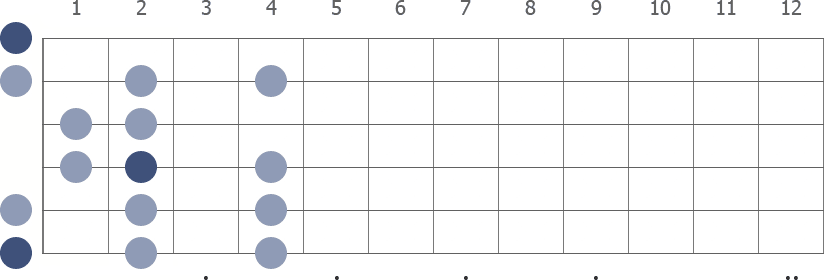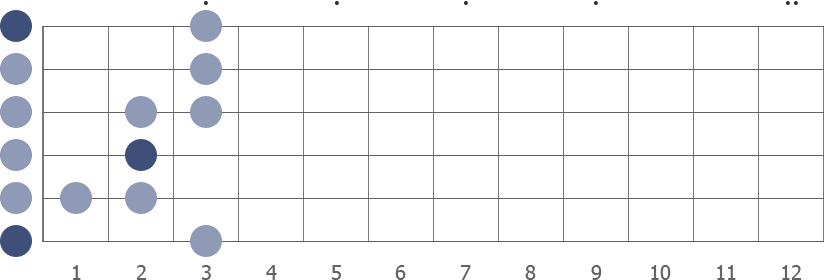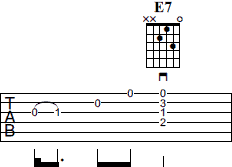Major and Blues scales comparison
The Major scale compared to the Blues scale with diagrams and playing examples.
If the 2nd and 6th are omitted and the 3rd, 5th and 7th are flattened in the Major scale, the result is the Blues scale. In addition, a flattened 5th is added, which mostly function as a passing note. All in all, this creates a six-tone scale, which in reality has more in common with the minor than the major equivalent. The blues scale is obviously congenial for the blues style, whereas the regular Major scale won't sound right for blues in most situations.
E Major scale degrees and notes.
| 1 | 2 | 3 | 4 | 5 | 6 | 7 |
|---|---|---|---|---|---|---|
| E | F# | G# | A | B | C# | D# |
E Blues scale degrees and notes.
| 1 | b3 | 4 | b5 | 5 | b7 |
|---|---|---|---|---|---|
| E | G | A | Bb | B | D |
The E Blues is also close related to the E Pentatonic Minor:
E Pentatonic Minor scale degrees and notes.
| 1 | b3 | 4 | 5 | b7 |
|---|---|---|---|---|
| E | G | A | B | D |
Scale diagrams
The scale diagrams show E Major and E Blues in open positions.
E Major

E Blues

Playing examples with explanations of concepts
In blues, the flattened 3rd and normal 3rd can be used together.

Example 1:
The hammer-on involves the G (3) and G# (b3) tones on the third string.

Example 2:
The slide involves the G (3) and G# (b3) tones on the sixth string.
The flattened 5th wants to resolve to either the 4th or the major 5th.

Example 3:
The lick involves the Bb (b5) in a sequence where it follows the A (4) and goes on the B (5).
The flattened 7th is seldom combined with the major 7th since the major 7th doesn't sound right in most blues licks.

Example 4:
The sequence involve the D (b7) where it leads to the E (I).